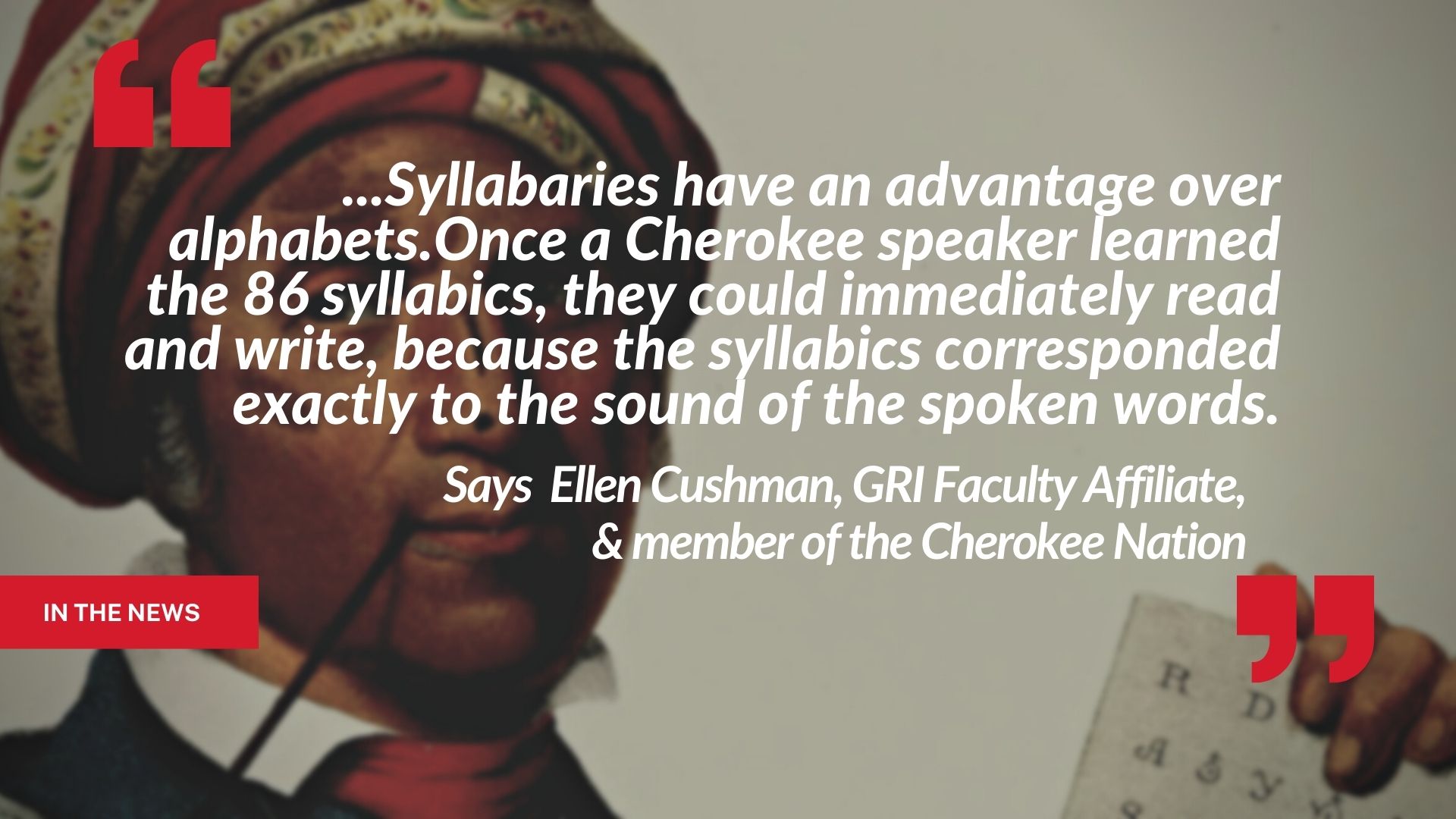How a Cherokee Leader Ensured His People’s Language Survived

In this article by Michelle Cyca for History.com, Ellen Cushman, a faculty affiliate at GRI, a professor at Northeastern University, and a member of the Cherokee Nation says syllabaries have an advantage over alphabets.
She notes in this piece “Once a Cherokee speaker learned the 86 syllabics, they could immediately read and write, because the syllabics corresponded exactly to the sound of the spoken words. Compare this to learning English, where you need to learn the 26-character alphabet, then learn to put those sounds together to form syllables and words. As a result, says Cushman, “Within three to five years of its introduction, the tribe could read and write.” As many as 90 percent of the Cherokee were literate by the 1830s, a far higher literacy rate than among the white settlers of America.”
As Dean’s Professor of Civic Sustainability, Ellen Cushman‘s research explores the perseverance of people made possible with reading and writing. She is currently co-leading a team that is developing a digital archive to support the translation of Cherokee language manuscripts housed in museums and archives around the country in an effort to advance language perseverance and preservation efforts. This project has been generously supported by an Institute for Museums and Library Services Sparks! Ignition Grant and a Northeastern University Tier 1 Grant.
Her current research also includes two forthcoming edited collections: Literacies: A Critical Sourcebook, 2nd edition, with co-editors Christina Haas and Mike Rose (Macmillan); and Landmark Essays on Rhetorics of Difference, with co-editors Damián Baca and Jonathan Osborne (Routledge). Her sole-authored books, The Cherokee Syllabary: Writing the People’s Perseverance (Oklahoma UP 2012) and The Struggle and the Tools: Oral and Literate Strategies in an Inner City Community, (SUNY UP 1998) were based on activist qualitative research with her tribe and urban community members in upstate New York.
